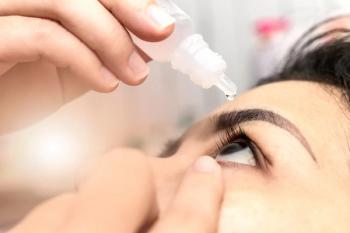
5 tips to help block blue light in an increasingly remote world
As consistent use of digital devices remains a fact of life for people of virtually all ages, consider this expert advice
With persistent spread of the virus that causes COVID-19 nationwide, some traditionally in-person activities—work, school, and social interactions—will likely remain remote more often than usual for the foreseeable future.
As a result, the use of digital devices has surged significantly as people spend more time at home, with Americans logging an average of
That compares to between seven and 10 hours per day before the COVID-19 pandemic started, with the increase in screen time likely contributing to more exposure to blue light.
While this low-wavelength, high-energy light offers some benefits, such as boosting alertness and elevating moods, too much of it may cause problems.
Researchers continue to evaluate the potential short- and long-term
Here are five eye health tips to consider as the consistent use of digital devices remains a fact of life for people of virtually all ages:
1. Look for warning signs of digital eye strain.
Nearly 60% of U.S. adults
For parents, it is important to look out for digital eye strain and other signs of vision problems, as children may not be aware and won’t complain if their eyesight isn’t normal. Red flags may include squinting while reading or watching television, or difficulty hitting or catching a ball while playing sports. These issues can indicate an underlying vision problem that might require glasses or other treatments from an eye care professional.
2. Set screens at a proper distance.
Many people find it
Keeping this distance is especially important for children, as young people often hold digital devices closer to their faces than adults do—thus potentially leading to a higher amount of blue light. For people with computer-based jobs, it may be helpful to place reference documents so their head does not need to be repositioned to see them, such as above the keyboard, below the monitor, or on a document holder.
3. Use the 20-20-20 rule or other rest tactics.
It is important for people to give their eyes some rest during the day by breaking up long stretches of screen time. The
Further, getting outside and away from digital screens may reduce the risk of developing nearsightedness, which has become increasingly common in part due to the increased use of screens, and today
4. Leverage blue-light-blocking technology.
Many smartphones now include a “night mode” feature, which adjusts the screen’s setting to help filter out blue light. Likewise,
To help block blue light at the source, some computer manufacturers are
As part of a collaboration with Dell Technologies, UnitedHealthcare Vision recently
5. Get a comprehensive eye exam.
It’s a good idea for computer users to get
As we contend with the ongoing pandemic and transition to an increasingly virtual world, considering these tips can help people maintain or improve their eye health as part of an overall focus on whole-person well-being.
Newsletter
Want more insights like this? Subscribe to Optometry Times and get clinical pearls and practice tips delivered straight to your inbox.













































.png)


